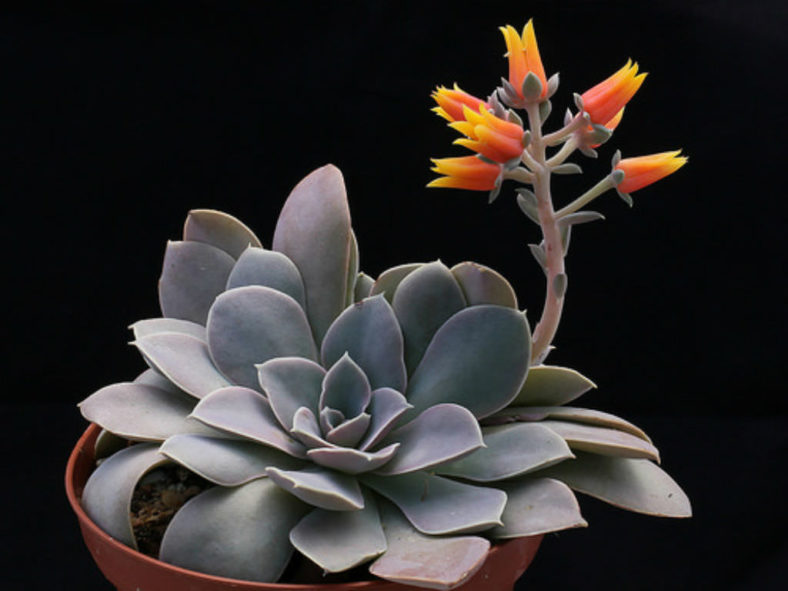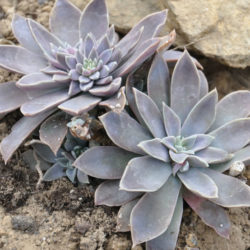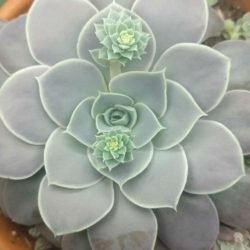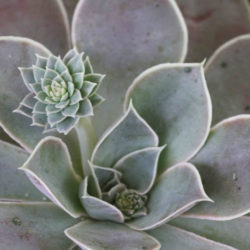Scientific Name
Echeveria diffractens M. Kimnach & A. Lau
Common Name(s)
Shattering Echeveria
Scientific Classification
Family: Crassulaceae
Subfamily: Sempervivoideae
Tribe: Sedeae
Genus: Echeveria
Origin
This species is native to Mexico (Veracruz).
Description
Echeveria diffractens is a succulent plant that forms flattened rosettes of many spoon-shaped, pointed, light pinkish-grey-violet leaves with a thin cream outline. The rosettes grow up to 4 inches (10 cm) in diameter, usually solitary, but the older plants can produce a few offsets. Leaves are up to 1.8 inches (4.5 cm) long and 0.9 inches (2.2 cm) wide.
From late spring to early summer, the rosettes produce several, usually unbranched flowering stalks with numerous easily detached bracts and attractive urn-shaped flowers. The erect flower stalks become decumbent to pendent as they age. Flowers are orange, often yellow near the apex.

Hardiness
USDA hardiness zone 9a to 11a: from 20 °F (−6.7 °C) to 50 °F (+10 °C).
How to Grow and Care
Most common Echeveria species are not complicated succulents to grow, provided you follow a few basic rules. First, be careful never to let water sit in the rosette as it can cause rot or fungal diseases that will kill the plant. Additionally, remove dead leaves from the bottom of the plant as it grows. These dead leaves provide a haven for pests, and Echeverias are susceptible to mealy bugs. Finally, as with all succulents, careful watering habits and plenty of light will help ensure success.
Repot as needed, preferably during the warm season. To repot a succulent, ensure the soil is dry before repotting, then gently remove the pot. Knock away the old soil from the roots, removing any rotted or dead roots. Treat any cuts with a fungicide. Place the plant in its new pot and backfill it with potting soil, spreading the roots out as you repot. Leave the plant dry for a week or so, then begin to water lightly to reduce the risk of root rot.
See more at How to Grow and Care for Echeveria.
Links
- Back to genus Echeveria
- Succupedia: Browse succulents by Scientific Name, Common Name, Genus, Family, USDA Hardiness Zone, Origin, or cacti by Genus
Photo Gallery
Click on a photo to see a larger version.


